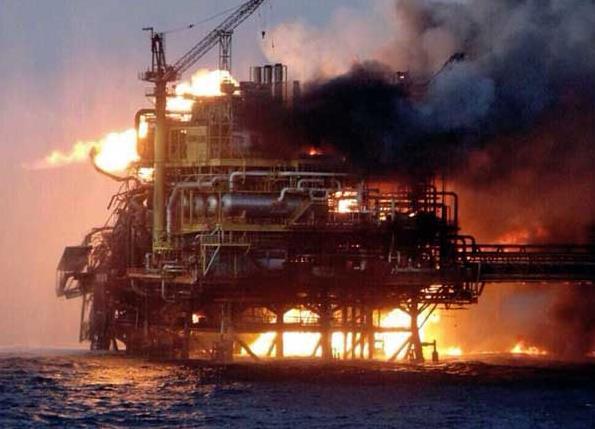The oil and gas industry fuels our modern world, powering vehicles, heating homes, and powering countless industries. But beneath the surface of this seemingly boundless bounty lies a darker side – the ever-present danger of oilfield accidents. These incidents, often catastrophic, claim lives, mar environments, and leave lasting scars on communities. Let's delve into the major types of oilfield accidents and understand their devastating impacts.
Types of Oilfield Accident
Explosions and Fires
Imagine a fiery inferno engulfing an oil rig, the deafening roar of flames consuming metal and flesh. Explosions and fires are among the most feared hazards in oilfields, often triggered by leaks, sparks, or faulty equipment. The consequences are brutal: fatalities, severe burns, and lasting physical and psychological trauma.
Blowouts
Picture a geyser of oil and gas erupting uncontrollably from the wellbore, spewing toxic black gold into the air and choking the landscape. Blowouts occur when pressure within the wellbore exceeds the capacity of the equipment, releasing a torrent of hydrocarbons and contaminants. Environmental damage can be immense, and the financial costs astronomical.
Equipment Failures
Oilfield equipment operates under immense pressure and in harsh environments. Malfunctioning machinery, from derricks to valves to pipelines, can lead to a cascade of disastrous events. Crushing injuries, toxic leaks, and environmental spills are just some of the potential consequences.
Chemical Exposure
Oilfields are a cocktail of hazardous chemicals, from drilling fluids to volatile hydrocarbons. Exposure to these substances can range from mild skin irritation to respiratory problems, organ damage, and even cancer. Strict safety protocols and comprehensive training are crucial in mitigating these risks.
Transportation Accidents
The transportation of oil and gas, whether by pipeline, truck, or tanker ship, comes with its own set of dangers. Collisions, leaks, and fires can have devastating consequences for ecosystems, local communities, and the lives of those involved in transportation.
Beyond the Statistics: Human Cost and Environmental Scars
Oilfield accidents are not just numbers on a page; they are human tragedies with lasting impacts. Families lose loved ones, communities grapple with environmental and economic devastation, and the scars on ecosystems can take generations to heal. The Deepwater Horizon disaster in 2010 serves as a stark reminder of the immense human and environmental cost of oilfield accidents.
Moving Towards a Safer Future
The oil and gas industry is not without its efforts to improve safety standards and prevent accidents. Technological advancements, stringent regulations, and comprehensive training programs are all crucial steps in mitigating the risks. However, constant vigilance, a culture of safety, and prioritizing human lives and environmental well-being above all else remain paramount.
In conclusion, oilfield accidents are a chilling reality in the pursuit of this valuable resource. Understanding their types, recognizing their devastating impacts, and working towards a safer future are essential not just for the industry, but for the communities and ecosystems that depend on a healthy planet. Let us remember that the true cost of oil goes beyond the price at the pump – it is etched in the lives lost, the landscapes marred, and the scars that linger long after the flames have died down.



